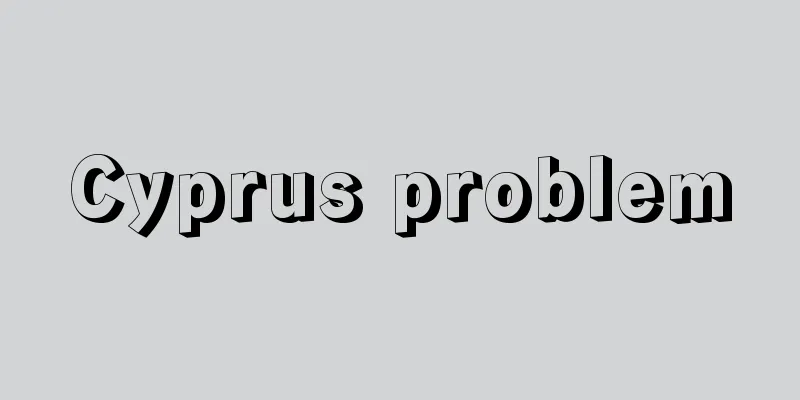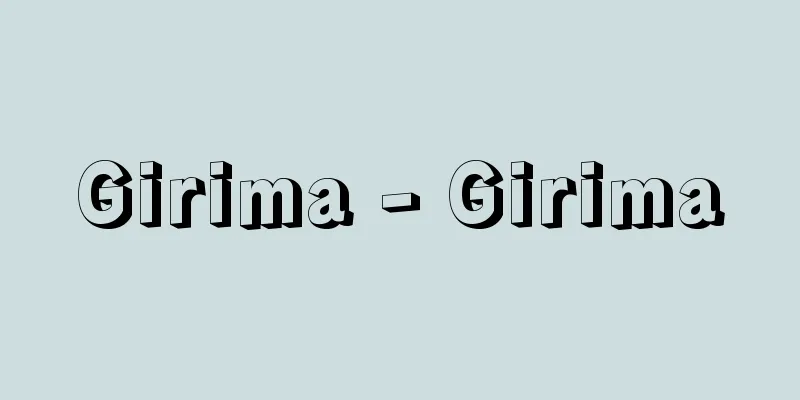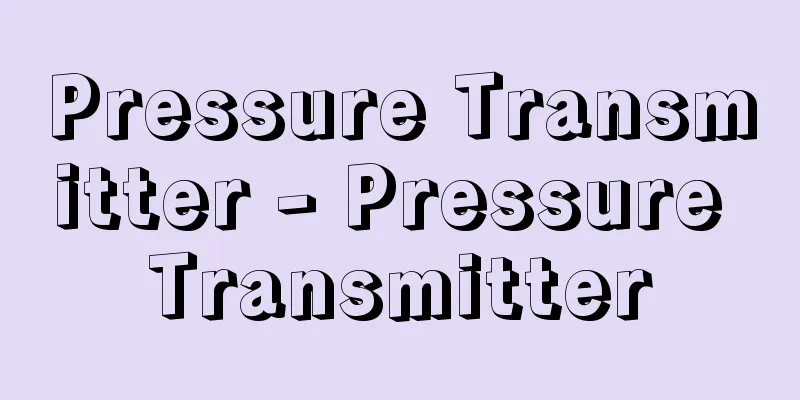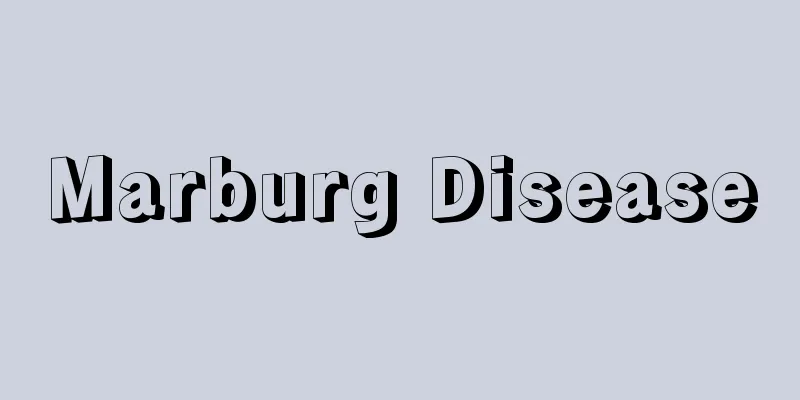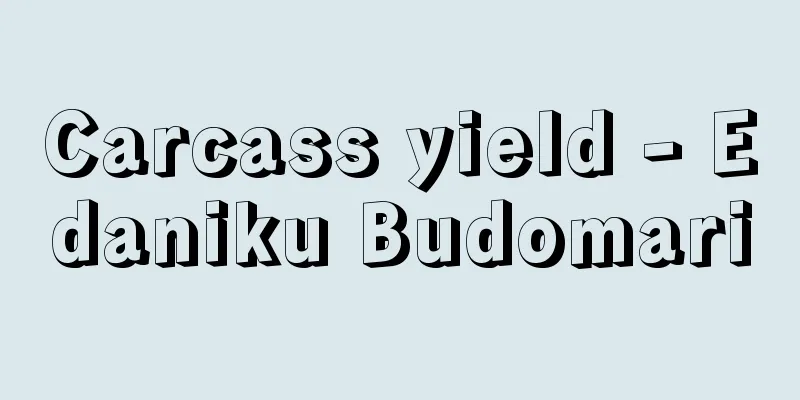Painless childbirth - Mutsuubunben

|
This refers to the use of anesthesia or other methods to allow the mother to give birth without feeling any pain during labor. Labor pain is a general term for the pain during labor caused by paroxysmal contractions of the uterus and abdominal pressure. Although this term is not used much in recent years, it is also called pain-relieving childbirth, and the aim of painless childbirth is to relieve the pain of childbirth as much as possible, and in reality, there is not much emphasis on the fact that it is painless. Painless childbirth can be broadly divided into medical and non-medicinal methods. [Masao Arai] Medication-assisted painless childbirthAlso known as obstetric anesthesia, this method combines analgesia and anesthesia. First, to eliminate the pain of the first stage of labor (opening stage), which lasts for a long time, drugs with analgesic, sedative, and hypnotic effects are taken orally or injected subcutaneously to suppress the brain's ability to sense pain. This is called premedication. If too much of the drug is administered, it can affect the fetus and cause neonatal asphyxia after birth, and if it is administered too early, it can cause labor to be abnormally prolonged. Next, in the second stage of labor (delivery), when the pain is at its most intense, inhalation anesthesia and local anesthesia are used. Nitrous oxide (nitrous oxide) is mainly used for inhalation anesthesia, and the patient is instructed to take two or three deep breaths of nitrous oxide gas each time a contraction occurs and then breathe hard. Local anesthesia includes paracervical anesthesia during the first stage of labor, pudendal nerve block and saddle block (which paralyzes the area where the bicycle saddle touches) during the second stage of labor, as well as continuous epidural anesthesia throughout the first and second stages of labor, all of which are methods that keep the mother unconscious and prevent her from feeling the pain of labor. However, there are large individual differences in how people perceive pain, so the amount of anesthetic needed needs to be adjusted depending on the individual, and it is also desirable to use a non-pharmacological painless childbirth method in combination. Painless childbirth is not covered by insurance and requires a financial burden, so it is often performed at the request of the mother. [Masao Arai] Drug-free painless childbirthA method of preparing physically and mentally for childbirth by receiving prenatal education during pregnancy is widely used. This includes the natural childbirth method proposed by British obstetrician GD Read in 1933, psychoprophylactic painless childbirth that began in the former Soviet Union around 1950, and the Lamaze method, which is a further development of this method. Natural childbirth is also called "anxiety-free childbirth," and aims to break the vicious cycle of tensing the mind and body due to fear of childbirth pain, which in turn makes the pain worse and the fear even stronger. Education to prepare for childbirth during pregnancy is given to eliminate fear, and breathing and relaxation techniques are taught in the hope of ensuring a safe and painless natural childbirth. The so-called calisthenics for pregnant women were systematized by physical therapists as one method of this method. On the other hand, psychoprophylactic painless childbirth was started by the cooperation of psychiatrists and obstetricians, applying Pavlov's conditioned reflex theory. It also involves prenatal education to prevent the conditioned reflex of pain and the lowering of pain threshold due to fear and anxiety, and teaching the patient to perform auxiliary movements to suppress pain stimuli during childbirth, thereby reducing the pain of childbirth. In addition, the French obstetrician-gynecologist F. Lamaze (1890-1957), who learned this method in the former Soviet Union and returned to Japan, implemented the Lamaze method in 1952, which adds breathing and relaxation techniques, as well as posture training and exercises for the waist and legs to psychoprophylactic painless childbirth, and also includes ideas such as having the husband participate and changing the abdominal breathing used in natural childbirth to chest breathing. In practice, several methods are often used in combination. In addition to these, there is also a painless childbirth method using acupuncture anesthesia, which was developed in China. [Masao Arai] [References] |Source: Shogakukan Encyclopedia Nipponica About Encyclopedia Nipponica Information | Legend |
|
麻酔などの方法を用いて産婦に産痛を感じさせないで分娩させることをいう。産痛とは、子宮の発作的収縮および腹圧に伴う分娩時の痛みを総称したもので、近年はあまり用いられないが和痛分娩ともよばれるように、産痛をすこしでも和らげようとするのが無痛分娩のねらいであり、無痛ということにはそれほどこだわらないのが実態である。 無痛分娩は、薬物による方法と薬物によらない方法に大別される。 [新井正夫] 薬物による無痛分娩産科麻酔ともよばれるもので、鎮痛法と麻酔法が併用される。まず長時間持続する分娩第一期(開口期)の痛みを除くために鎮痛、鎮静、催眠といった作用をもつ薬を内服または皮下注射して、痛みを感ずる脳を抑制させる。これを前投薬という。このとき薬の量が多すぎると胎児にまで影響を与えて生後新生児仮死をおこすことがあり、また投与が早すぎても分娩を異常に長引かせることになる。 続いて、痛みがもっとも激しくなる分娩第二期(娩出期)には吸入麻酔と局所麻酔が行われる。吸入麻酔にはおもに笑気(一酸化二窒素)が用いられ、陣痛発作のたびに二呼吸か三呼吸笑気ガスを深く吸い込み、そのまま強く息むように指導する。局所麻酔としては、分娩第一期に行う傍頸管(けいかん)麻酔と、分娩第二期に行う陰部神経ブロックやサドルブロック(自転車のサドルが当たる部位を麻痺(まひ)させる)のほか、分娩第一期と第二期を通じて行う持続硬膜外麻酔などがあり、いずれも産婦の意識を失わせず産痛を感じさせない方法である。しかし、痛みの感じ方には個人差が大きく、麻酔薬の量を人によって加減する必要があり、薬物によらない無痛分娩法の併用も望まれる。なお、無痛分娩は保険適用外で費用の負担が発生するので、産婦の希望によって行われることが多い。 [新井正夫] 薬物によらない無痛分娩妊娠中に産前教育をして分娩に対する身体的および精神的準備をしておく方法が広く行われている。これには、イギリスの産婦人科医リードG. D. Readが1933年に提唱した自然分娩法をはじめ、旧ソ連で50年ころから始められた精神予防性無痛分娩、さらにこれを発展させたラマーズ法などがある。自然分娩法は「不安なき分娩法」ともいわれるように、産痛に対する恐怖から心身を緊張させ、それによって産痛がひどくなり、ますます恐怖が強まるといった悪循環を断つ目的で妊娠中に分娩準備教育を行い、恐怖心を除くとともに、呼吸法や弛緩(しかん)法を指導することによって安全で産痛の少ない自然分娩を期待するもので、いわゆる妊産婦体操はこの方法の一つとして理学療法士により体系化されたものである。 一方、精神予防性無痛分娩は、パブロフの条件反射理論を応用して精神神経科医と産科医との協力で始められたもので、やはり産前教育を行い、痛みの条件反射および恐怖や不安による痛覚閾(いき)の低下を防ぎ、分娩時には痛覚の刺激を抑制するような補助動作ができるように指導して産痛の軽減を図る方法である。また、旧ソ連でこれを習得して帰国したフランスの産婦人科医ラマーズF. Lamaze(1890―1957)が1952年から実施したのがラマーズ法で、呼吸法や弛緩法のほか、姿勢の訓練、腰や足の運動などを精神予防性無痛分娩に加味し、夫を参加させたり、自然分娩法における腹式呼吸を胸式呼吸にかえるなどのくふうもみられる。実際にはいくつかの方法を組み合わせて行う場合が多い。 なお、これらとは別に、中国で発達した鍼(はり)麻酔による無痛分娩もある。 [新井正夫] [参照項目] |出典 小学館 日本大百科全書(ニッポニカ)日本大百科全書(ニッポニカ)について 情報 | 凡例 |
Recommend
Chandara (English spelling) caṇḍāla
The outcasts of ancient India. They were also call...
Normalization constant - normalization constant
...This is called the normalization condition. N ...
Rational numbers
Any number that is a combination of integers and ...
Parupeneus chrysopleuron (sea red carp)
A marine fish of the family Goatfish in the order ...
Maple shell (Astropecten scoparius)
An echinoderm of the family Acanthidae (illustrati...
Aya River
A general term for the Ayakita River and Ayanan Ri...
Xishuku - Gishuku
…The driver of the sun chariot is called Xihe, du...
Common logarithm
…Since the usual numeral system is the decimal sy...
Podiceps grisegena (English name) Podiceps grisegena
…[Hiroshi Hasegawa]. … *Some of the terminology t...
Kaido
[1] 〘 noun 〙① A sea route. Sea route. Ship route ....
Moth trap - Yuugatou
A light trap is a device that uses light to attra...
Tuberous root
...Cyclamen, Caladium, Gloxinia, Anemone, etc. (4...
Asaka [city] - Asaka
A city in the southeastern part of Saitama Prefect...
City region
The area of influence of urban functions such as...
Earthquake off the coast of Izu Oshima - Izu Oshima Kinkai Jishin
On January 14, 1978, a magnitude 7.0 earthquake oc...
